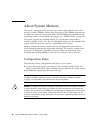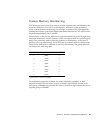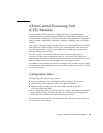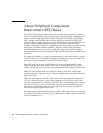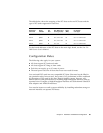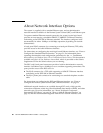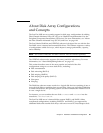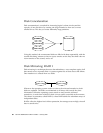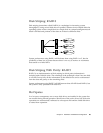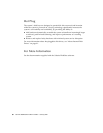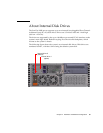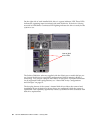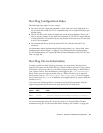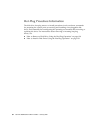
Chapter 4 Hardware and Software Configuration 87
About Disk Array Configurations
and Concepts
The Sun Fire 280R server expands support for disk array configurations by adding
Fibre Channel-Arbitrated Loop (FC-AL) to its UltraSCSI implementation over the
Peripheral Component Interconnect (PCI) buses. For more information, see “About
the Fibre Channel-Arbitrated Loop (FC-AL) and Port” on page 104.
The Sun Solstice DiskSuite and VERITAS software is designed for use with the Sun
Fire 280R server’s internal and external disk drives. The software supports a variety
of configurations called disk arrays, which improve storage performance, capacity,
and availability.
Note – Sun Solstice DiskSuite and other software must be ordered separately.
The VERITAS software also supports disk arrays and disk redundancy. For more
information, see “About Multipathing Software” on page 115.
This section describes some of the most popular and useful of the disk
configurations using two or more disk drives, including:
■ Disk concatenation
■ Disk mirroring (RAID 1)
■ Disk striping (RAID 0)
■ Disk striping with parity (RAID 5)
■ Hot spares
■ Hot plug
The DiskSuite software creates metadevices—logical disk devices consisting of one or
more physical disks or partitions from several disks. Once you use Solstice DiskSuite
to create a metadevice, the operating system uses and maintains the metadevice as if
it were a single device.
For instance, you can combine the two disks c1t2d0s2 and c1t3d0s2 into the
metadevice /dev/md/rdsk/d0.
The Sun Fire 280R server’s internal disks support RAID 1 and RAID 0. More
complicated configurations, including RAID 0+1 and RAID 5, are supported by
additional disks and external disk arrays with one or more PCI host adapter cards.




